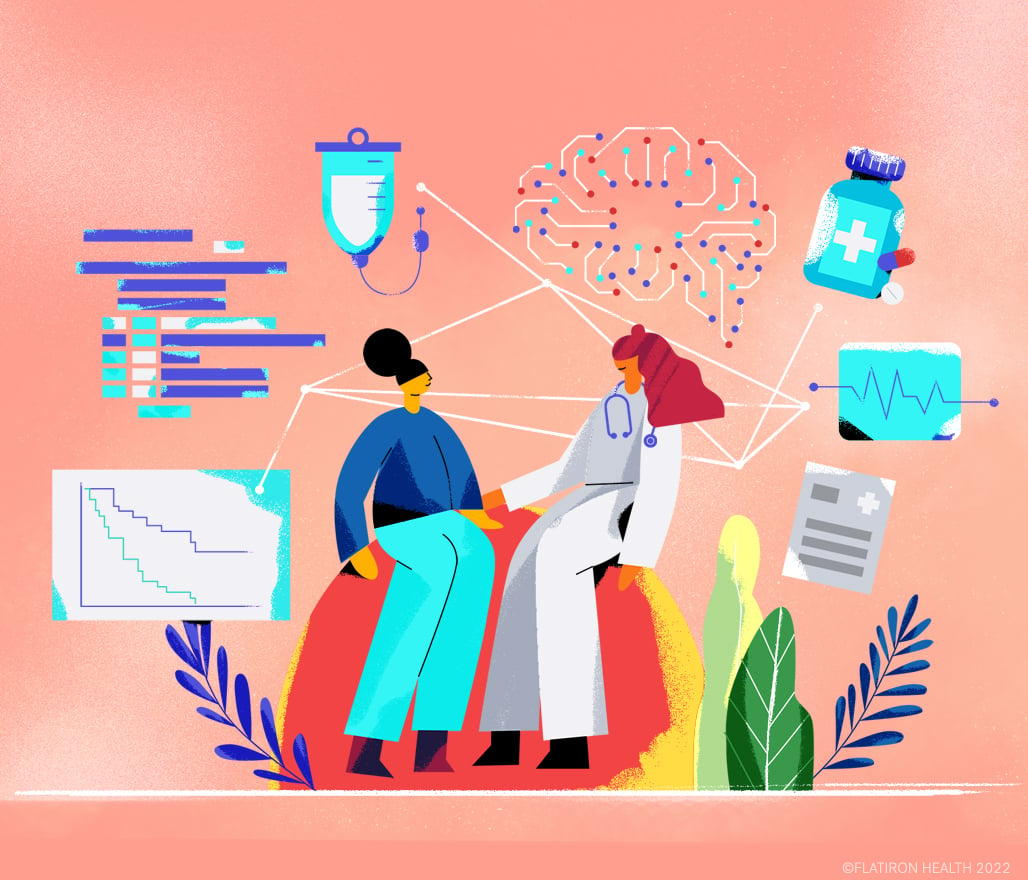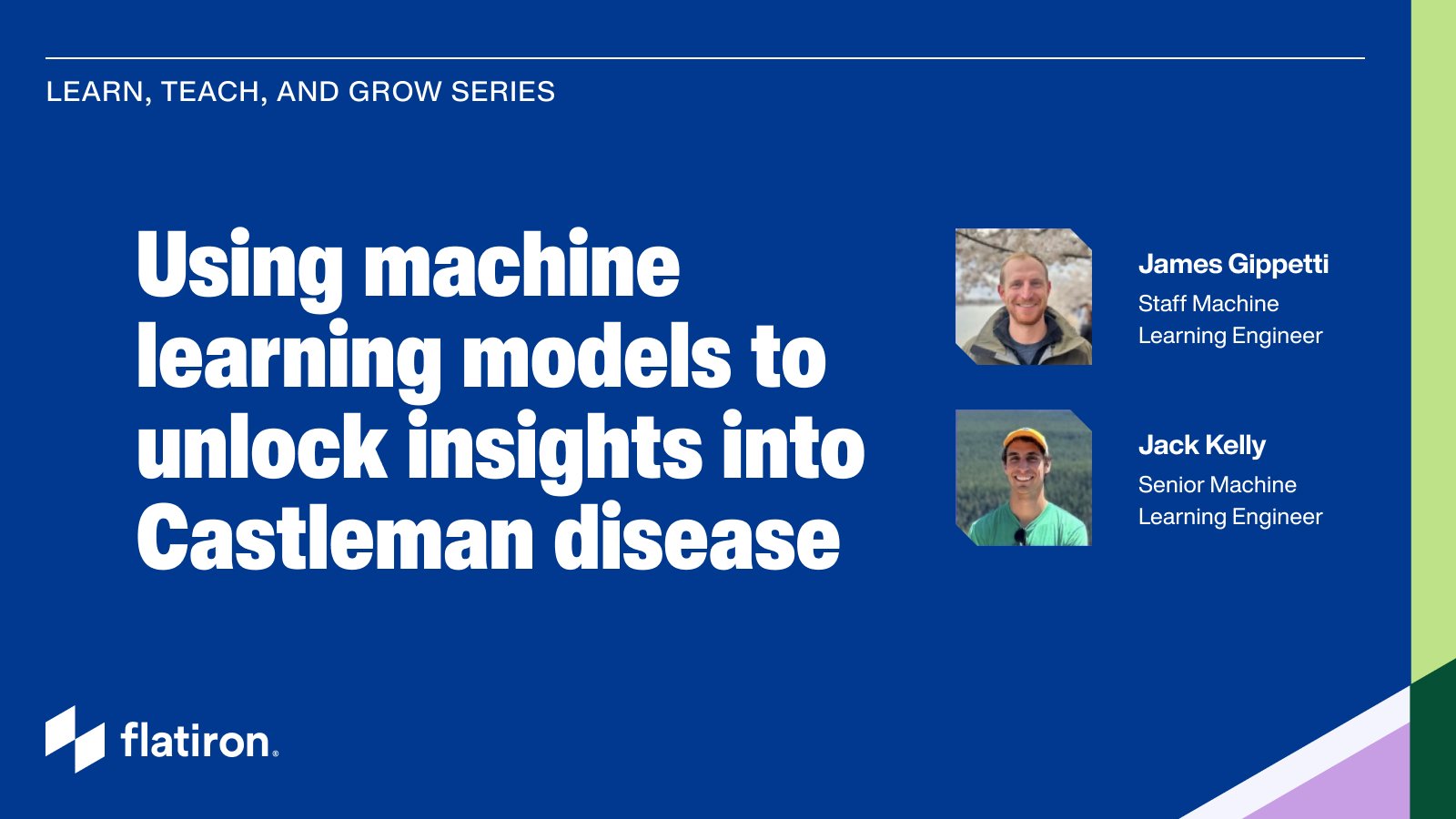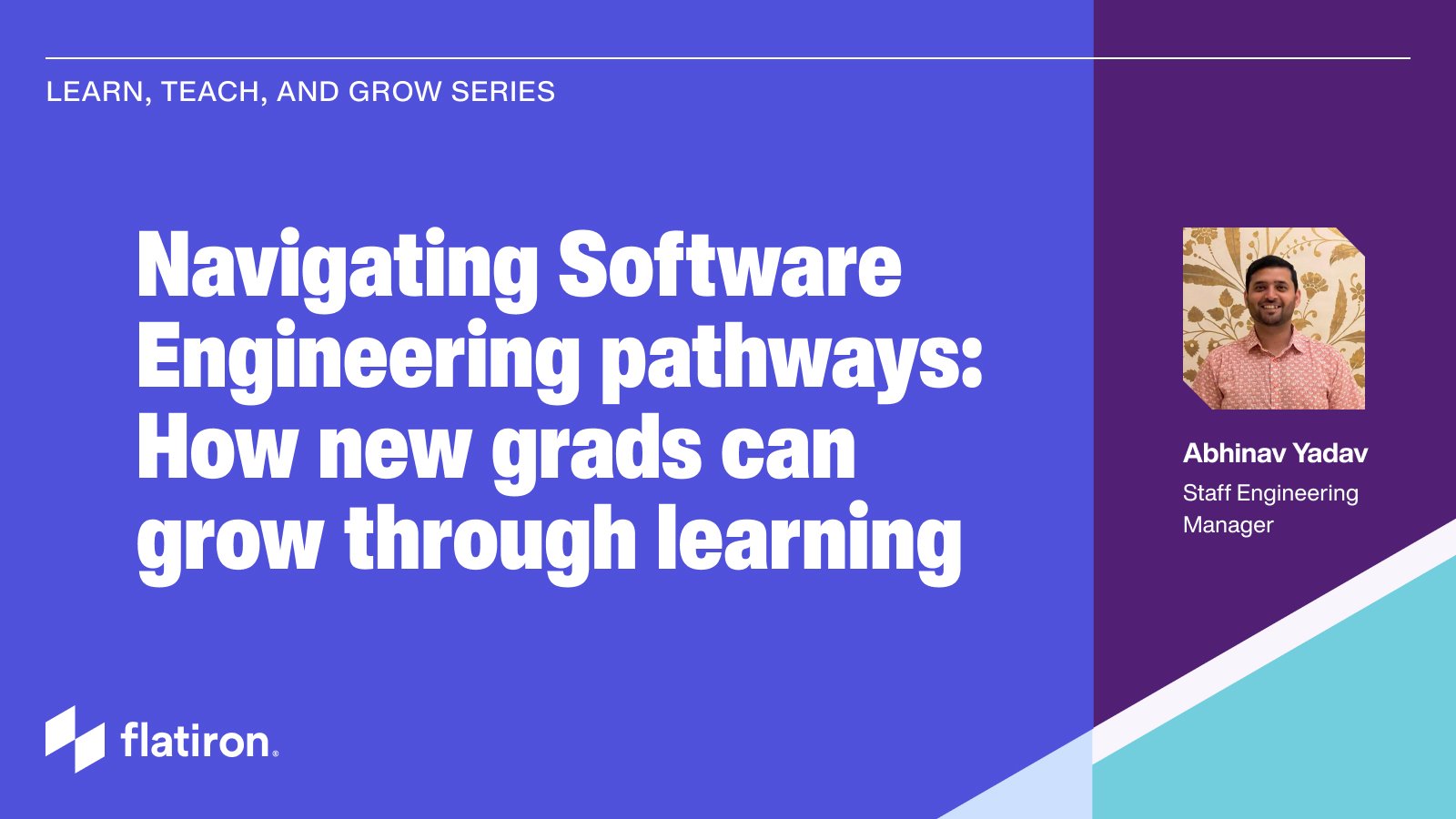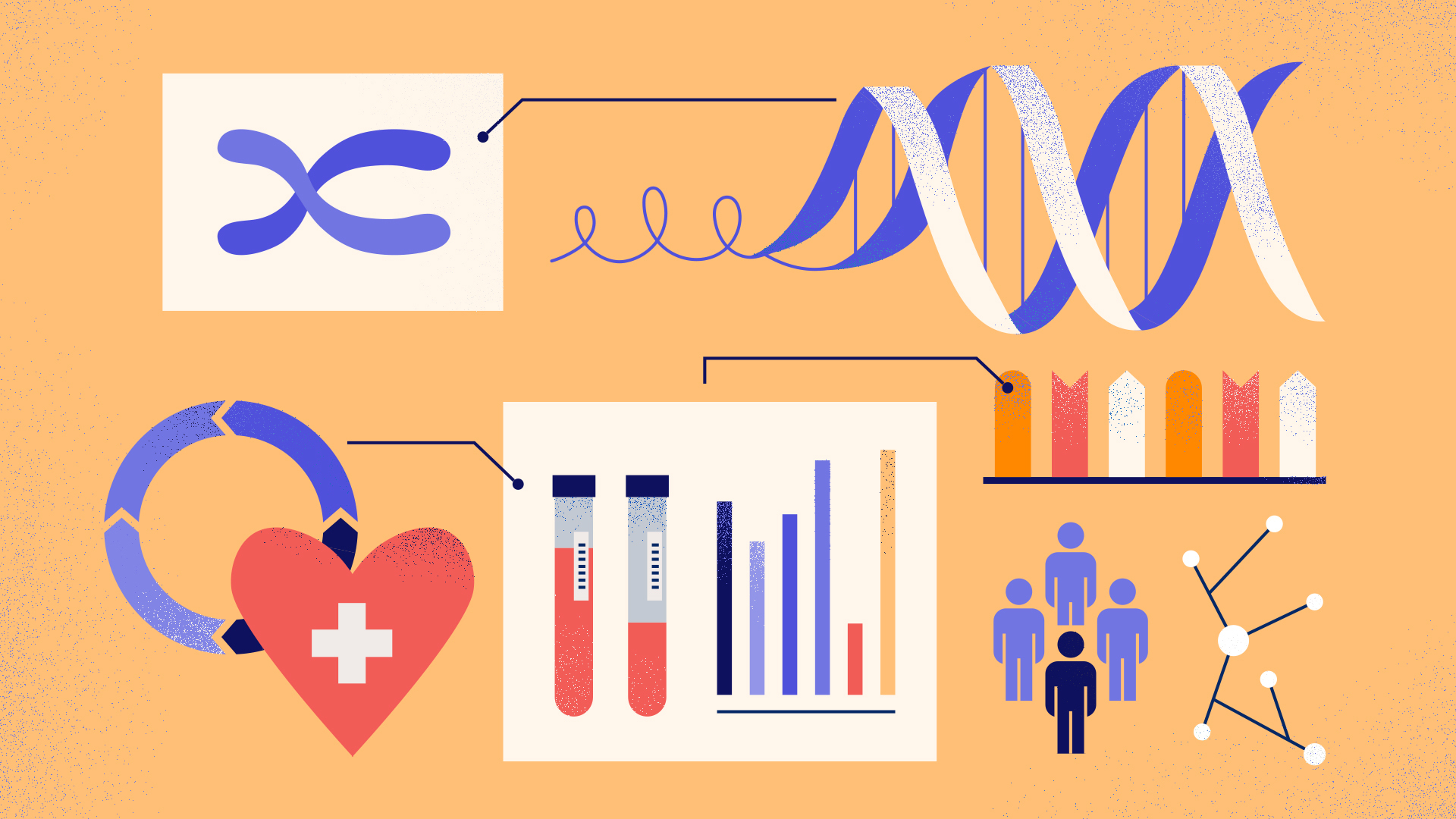Flatiron Health CEO Carolyn Starrett spoke at the HLTH 2022 conference about why embracing data and technology is critical to moving cancer care and research forward. Here is the transcript of her speech:
Good morning, everyone. Thank you for being here.
Who here agrees that we're at an inflection point in healthcare?
What I see every day is that we've never been closer to bringing personalized, reliable, accessible, and modern care to people with cancer.
Now, I know that we are all acutely aware that our healthcare system is broken. We all see how our current system blocks progress and stymies innovation. I also know that none of us came into this field dreaming of underserved patients and runaway costs. But it's not surprising that this is where we find ourselves today.
We arrived here following a long and complicated path. First, healthcare data has been siloed and inaccessible. Even today, a shocking amount of our data is still trapped in filing cabinets, unreadable scans, or systems that don't connect to each other. The healthcare industry is single-handedly keeping fax machine manufacturers alive!
Second, healthcare technology has historically served payers and regulators, not clinicians and patients. Software has been a blocker rather than an enabler, designed to collect data for reimbursement not to make lives easier and enable smarter decisions for the clinicians and researchers that rely on it.
And finally, healthcare incentives have been fundamentally misaligned. The primary payment models here in the US reward more tests, more drugs, and more treatment…with little regard to whether these interventions actually improve outcomes.
I lead Flatiron Health. We're a healthtech company working to improve and extend lives by learning from the experience of every person with cancer.
We've been working on these problems in cancer for the last 10 years, in collaboration with many of you, and our customers and partners across the ecosystem.
I'm confident that our healthcare system doesn't have to be the way it's always been. We now have the technology; we have the data; the time for change is now.
If you are here this week at HLTH and you chose to come to this talk, I'm going to guess that you're passionate about changing this broken system and—dare I say—finally putting patients front and center.
And that's good because we—all of us—have an obligation to bring healthcare into the future. This won't happen if we don't change our mindset; if we don't commit to a very different way of working; if we don't fully embrace the power of data and technology.
When we embrace data and technology, we can reimagine: How we develop and study new medicines, learn which treatments work best and make them available around the world, and help clinicians make the best choices for each patient.
Every day I see examples that show how we can radically transform our reality. These changes—using data for good—will help us put patients at the center of care and earn their trust.
When we do this, the possibilities are remarkable. Over the next 15 minutes, I'll walk you through an example in each of these areas.
How we develop and study new medicines
Let's start with the clinical trials we use to develop and study new medicines. Randomized clinical trials are the foundational tool we use to understand the safety and efficacy of new drugs. They play a critical role in drug development, but they also have considerable flaws. Those of you who have spent time at a trial site will appreciate how exhausting and draining the experience can be.
First, research teams are stuck using deeply antiquated, manual methods to collect the data required. Inefficient use of technology makes running trials extremely burdensome and means that sites can't open all the trials they might want to.
And then, because there are countless trials going on at a given time and most have highly specific eligibility criteria, it's painfully challenging to know where to find participants and how to get them to participate. Because of this, 1 in 5 research sites that open a trial never enroll a SINGLE patient. And despite the potential for life-changing benefits, fewer than 10% of patients participate in trials. Not only that, the people that do enroll tend to look quite different from the overall population of people with cancer.
They tend to be younger, richer, more educated, whiter, and with fewer comorbidities. In so many ways, trials are not representative of the people who will ultimately be treated based on their findings.
To make this real, let me double click on this first example—the burden on sites. Despite the near-complete adoption of EHRs, sites still have to collect most of the information for trials through paper forms. Estimates are that 70% of clinical trial data is duplicated between EHRs—the core system of record for clinical care—and EDCs—the system of record for trials. That's absurd.
Here's what happens today. Clinicians treat patients and capture data for clinical care in the EHR, but research teams then have to collect much of the exact same data for trials in various, disparate places.
This means they have to manually transcribe data points multiple times, into multiple different systems, risking manual error and adding time for each data point.
But it doesn't have to be that way. We now have the technology to bring research into the future. We have solutions to digitize trial-specific data collection and automate data transfer between systems, leveraging all the work already done by busy care teams. When we do all this, we can dramatically reduce the burden on sites, make research teams and patients' lives easier, and generate evidence faster than traditional methods.
And this is just one slice of the opportunity. Technology can not only help us make trials less burdensome, it can also help us make them more accessible and more representative. One recent example is a study Flatiron collaborated on with Genentech and Foundation Medicine—the Prospective Clinicogenomic study. This study was designed to evaluate the feasibility of a scalable, prospective research program for participants with 2 types of lung cancer. It examined circulating tumor DNA status over the course of treatment to better understand and make predictions about the participants' response to therapy.
Going back to the burden on sites—by fully leaning into technology, we demonstrated that we could enable all the data collection necessary directly within the EHR as part of everyday care and entirely eliminate the need for a separate, duplicative EDC system.
At the same time, we also used machine learning to automate the patient enrollment process. Our tech platform surfaced eligible patients to research coordinators using AI to automatically filter across the site's trials and patients. It then alerted doctors about potential trial candidates by flagging their eligibility directly in the visit list in the EHR. This reminded doctors to talk to their patients about the option at that critically important moment before starting standard-of-care therapy. No more printed paper checklists posted in the prep room. No more sticky note reminders. As a result, we were able to enroll almost 1,000 patients across more than 20 community cancer sites—all during the height of COVID.
And this matters. We know that people from historically marginalized groups have been disproportionately excluded from clinical trials. By integrating studies like this into routine care and meeting patients where they are, we can expand access to patients who might never otherwise have had such an opportunity.
Imagine what would happen if we used technology so seamlessly for all trials? How many more trials could we run? How many more patients could we enroll? How many more lives could we save?
How we learn which treatments work best and ensure they are available to the patients who need them
So now, we can make trials faster and more efficient, with more diverse patients. But the trial is really only the beginning. The generalizability of clinical trial results to the "real world" are often not well understood, especially as more and more drugs are authorized on smaller, narrower data sets, and people in trials today don't look like the people that will ultimately receive those therapies.
We now have the data and technology to better understand how diseases progress and different therapies perform. The patient data collected as part of routine care can now help us bridge these gaps between trials and the real world and enable more diverse and generalizable findings.
This is happening across disease areas and across the ecosystem, but I'll give you an example from our experience at Flatiron in the cancer space.
We've used a combination of natural language processing, machine learning, and human-validated, expert abstraction methods to build aggregated, de-identified research datasets that span roughly 30% of cancer cases in the US, with a majority of the data coming from community sites. Using data-linking technologies, we can now carefully generate and combine data from multiple sources to produce what we call "integrated evidence." For example, we can link the detailed genomic test results for each patient to learn how each person's unique genetics impacts their response to therapy.
But all of this only helps us learn about outcomes faster if we can actually understand the outcomes themselves. One of the most important ones to study is overall survival. When a patient dies, they of course don't come back to the cancer clinic where they were treated, so dates of death are not consistently logged in the EHR. For this reason, we invested to securely integrate mortality data into our datasets. Similarly, we can abstract data from the images and visit notes that live in an EHR to carefully capture and validate tumor progression in our datasets. Meaning: there's so much more we can now learn from real world integrated evidence than was possible even 5 years ago.
An example I love is the work Lilly did using Flatiron data for Erbitux. Erbitux was approved in 2004 for patients diagnosed with colon cancer or cancer of the head and neck. Patients on this drug received infusions once a week. Imagine you're a 60-year-old woman with colon cancer who lives near the Grand Canyon. The closest cancer center is 90 minutes away and you have to travel there and back once a week. Now imagine that for the next 3 days after each infusion, you have a fever and are nauseated. You have trouble sleeping and a constant headache. By the time you feel back to yourself, you only have a couple days before you have to go for another infusion.
If this is you, you will have very little time to enjoy your life. Simply put, therapy becomes your life.
The original Eribitux trial was only designed to answer a single question: was this treatment safe and effective based on the parameters of the study? But without probing further, how do we know if there could be a better option? What if there was a way to alter the dosing to make this treatment less painful for patients and their families?
Over the years, clinicians administering Erbitux and patients receiving treatment did the best they could with the evidence and guidelines they had—and then they started to get creative. Given the known pharmacokinetic profile of the drug, we started to see doctors prescribing bi-weekly off-label dosing schedules, and it looked like patients were seeing equivalent results.
Last year, Lilly was able to use integrated evidence to analyze real world treatment patterns and survival data and make a case to the FDA to move to double the dose in bi-weekly infusions as the new standard of care. Years of real world experience and patient stories showed that there was a better alternative. And data and technology proved that. Lilly didn't have to spend 100s of millions of dollars to run a trial. We didn't have to wait to find the right patients for the trial. And, most importantly, patients got back time. Time to be active and enjoy their lives. And this is just one example! Think about all the applications we could consider.
We can use integrated evidence to learn about subpopulations of patients that aren't effectively represented in clinical trials—pregnant women, people with chronic diseases, people with food or housing insecurity, historically marginalized groups, and others. We can use integrated evidence to make decisions on the approval and reimbursement of new medicines around the world. The possibilities are limitless.
How we help clinicians make the best choices for each patient
Countless examples show that we can use data and technology to improve how we develop new drugs and learn about their effectiveness in real world populations, but this only matters if we can then translate that knowledge into the right choices for each individual patient.
In the past, when the pace of change in treatment guidelines was much slower, doctors could keep track of the latest guidance by committing it to memory or referencing medical guides or Dr Google for unusual cases. Today, that's no longer practical. With the pace of scientific advancement, keeping up has become a never-ending and impossible task.
This is a problem that technology can solve. We can use technology to put the latest information at a doctor's fingertips, ensuring that they can make the best choice even as more and more targeted, personalized therapies emerge and reimbursement requirements grow ever more complex. We can give patients access to potentially lifesaving treatment faster. After all, what good is a new game-changing treatment if busy doctors don't know about it? More importantly, what good is the same game-changing treatment if doctors taking care of patients every day can't do anything about it?
This was the scene following Dr. Shanu Modi's plenary session at ASCO, the largest cancer research conference, this past June. Standing ovation. From typically very hard-to-impress oncologists. As many of you will recall, Dr. Modi presented results from her research study called DESTINY-04 on the use of Enhertu, a breast cancer therapy from AstraZeneca. The study established a new standard of care for certain breast cancer patients and demonstrated a 50% improvement in progression-free survival and a 6-month overall survival benefit.
The major innovation was the use of an existing approved drug in a patient population that wasn't previously studied or targetable. I'm oversimplifying here, but previously people with HER2 Positive tumors were eligible for targeted therapy. People with HER2 Negative tumors were not. But the study showed that people with low levels of HER2 also respond well to this targeted therapy. Nearly half of all breast cancer patients are HER2 Low. And Enhertu could extend their lives by 6 months! That's incredible. It's life changing.
But there was still a problem. Unfortunately, HER 2 Low test results for anyone who had already been tested would be lost in static PDFs that aren't searchable. How would doctors know who might benefit from this groundbreaking new treatment option?
Luckily, in early 2021, 4 months before the DESTINY-04 study results were announced, teams at Flatiron started getting requests from practices and the study sponsor asking to change the way we were capturing HER2 results. As a result, we made a small change to our EHR to split the HER2 Negative field into two values - anticipating the time when the difference between 0 and 1+ would matter.
This seemingly trivial change meant that we could now capture the HER2 Low biomarker status and embed it dynamically into clinical decision support tools, allowing busy doctors to keep up to date on the latest advances. New patients could then take advantage of the latest research breakthroughs immediately, getting access to treatments that could improve and, quite literally, extend their lives. And this point is critical—this is where data and technology can truly make a difference—eligible patients who were already treated could easily be surfaced and re-evaluated. In fact, we found 3000 eligible patients in just a single clinic alone! Aggregate data can be revolutionary, but it becomes practice changing, life giving, when we remember that it begins and ends with an individual.
We all know someone who's been impacted by breast cancer. One of the oncologists that works at Flatiron introduced us this year to a patient of hers. She had an extremely rough time during and after her treatment. She almost stopped her curative therapy because of the intense side effects she was experiencing. She is cancer free right now, but she's at extremely high risk of her cancer coming back. If she ever does progress and become metastatic, we now know that she is, in fact, HER2 low and eligible for Enhertu. It could mean far less toxic side effects than what she experienced with chemo and radiation.
It means hope for her, and for her loved ones. And that's just one patient. This year, almost 56,000 breast cancer patients have been diagnosed thus far, and over half are HER2 Low. Think about all the lives that will change when we get them onto the right treatment.
Now imagine this technology being deployed at scale, not just with patients with cancer, but with ALL patients. It means more time. More hope. More life. This future is not only possible, it's here. We just need to shift our mindset to fully adopt and take advantage of the technologies we've built over the last decade.
We all have an obligation—to use data for good
And it doesn't just mean a mindshift for everyone in this room. For this path to succeed, we must bring patients along. Every day, we're proving that technology—and data—can be used for good. The foundational technology platforms—EHRs and digital data streams—are in place. We have technology—and soon standards—that can enable us to safely and effectively connect the data from them.
When we adopt the strictest security standards to ensure that patient data is protected; maintain transparency about what types of data are being collected and how they are being used; and demonstrate accountability by doing the right thing with patient data, we can build trust with patients and unlock the incredible potential of the healthcare learning system that is now available.
Let me be clear: It's not enough to believe in the power of technology, as most, if not all of us, already do. And it's not enough to acknowledge that digital technologies are here to stay and will transform our industry in the future. We must take action in embracing data and technology.
Now I realize the examples I shared may not be sexy. But what they represent is the possibility for real and meaningful progress.
I'd like to issue a challenge to everyone in this room. What can you do to bring healthcare into the future? What will you do to shift your mindset—to champion and commit to new ways of working when you arrive back in the office or at the clinic next week? How will you hold yourself accountable for working differently and embracing the use of data and technology for good?
Together, we can.
Thank you.



